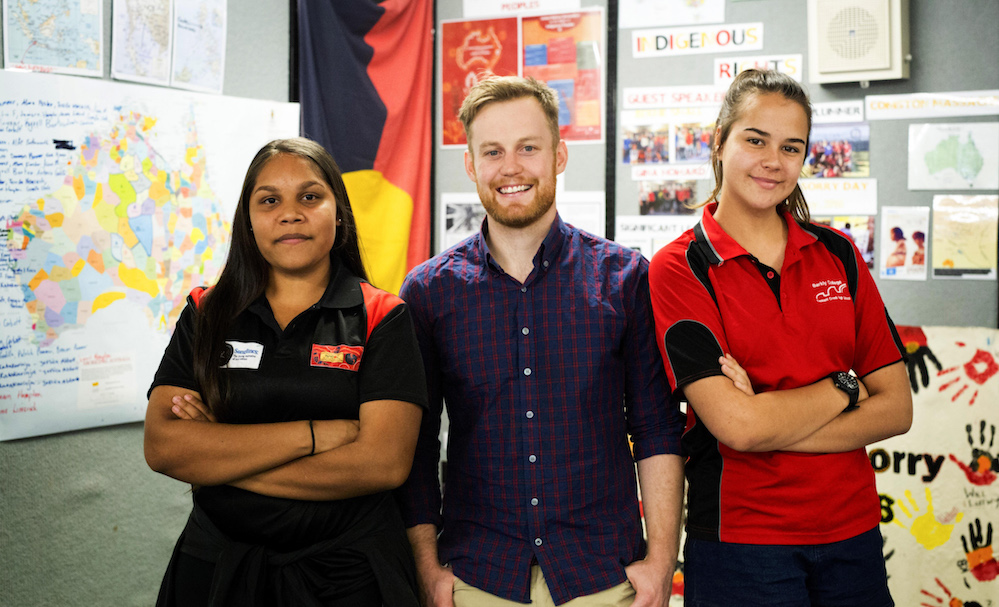
The preliminary results of NAPLAN 2017 were released last month, and the news wasn’t good. The annual test of our students’ literacy and numeracy skills shows that not much has changed since 2011, coincidentally – or not – when we began this annual circus of public reporting of NAPLAN results.
In fact, it seems our kids are actually getting dumber – at least as measured by the NAPLAN tests.
Going backwards
The year’s Year 9 students first sat the test back in 2011 when they were in Year 3, so we can now track the cohort’s performance over time.
It is particularly useful to track their performance against the writing assessment task, as all the grade levels are marked against the same ten assessment criteria. Depending upon how they perform against each assessment criterion, they are assigned a Band level – ranging from Band 1, the lowest, to Band 10, the highest.
The minimum benchmark shifts for each year level, because we would expect a different minimum level of writing performance for 16-year-olds than we would of ten-year-olds. So, in Year 3 the minimum benchmark is Band 2, and in Year 9 it is Band 6.
A gifted and talented Year 3 student could easily achieve a Band 6 or above, and it is conceivable a struggling Year 9 student may only reach a Band 2.
This year, a staggering 16.5% of Year 9 students across Australia were below benchmark in writing. Back in 2011, when those students were in Year 3, only 2.8% of them were below benchmark. Somehow we dropped the ball for thousands of those kids as they progressed through school.
The high-performing states of New South Wales, Victoria and the ACT cannot claim immunity from this startling increase in students falling behind as they progress through school. Their results show exactly the same trends. This is a nationwide problem.
It gets worse
Not only are the numbers of low-performing students increasing, but the inverse is occurring for our high-achieving students: their numbers decrease as they move through school.
This year, only 4.8% of Year 9 students across Australia performed far above the minimum benchmark – that is, at a Band 10 level. However, back in 2011, 15.7% of those same students were performing far above the minimum benchmark for Year 3 – that is, at a Band 6 or above.
The trend is strikingly similar across all the jurisdictions. As NSW congratulates itself on improving its Year 9 results, it might want to look a little closer to see what the figures are really saying.
In 2011 an impressive 20% of NSW Year 3 students were far above benchmark in writing. But by the time they had reached Year 9 this year, the number of them who were far above the benchmark had dwindled to a depressing 5.7%.
What is happening?
Why do we start so well, and then lose both high performers and strugglers along the way? Isn’t school supposed to be growing their literacy skills, not diminishing them?
Well, the NAPLAN statistics not only illustrate the problem, they actually provide the explanation.
We don’t have an early years literacy “problem” in Australia. The percentage of students below benchmark in Year 3 converts to very small numbers. In Victoria in 2016, for example, there were around 450 Year 3 students below benchmark.
It should be very easy to locate those children, and provide intensive interventions specifically designed for each student. But apparently we don’t.
By Year 5, those low performers across Australia are simply treading water and our high performers start to slide. Then it all takes a dramatic turn for the worse in Year 7, with a five-fold increase in students below benchmark and a three-fold decrease in those who are far above the benchmark.
So, what is going on?
Well, reading and writing gets harder in Year 4, and every year after that.
The Year 3 test is looking for evidence that the children have learned their basic reading and writing skills. They can decode the words on the page and comprehend their literal meaning. They can retell a simple story that is readable to others.
However, by Year 5, the test begins to assess the children’s ability to infer from and evaluate what they read, and to consider their audience as they write.
In Year 7 it is expected that children are now no longer learning to read and write, but that they are reading and writing to learn. To achieve this they need deep and technical vocabularies, and to be able to manipulate sentence structures in ways we do not and cannot in our spoken language.
And the NAPLAN results suggest that many of them cannot.
Instead, they are stuck with their basic literacy skills, obviously well learned in the early years of school. They can read – but only simple books with simple vocabulary, simple grammatical structures and simple messages. They can write – but they write the way they speak.
What’s the solution?
Raise our expectations of our students. And raise the quality and the challenge of the literacy work we do with them.
There has been a misplaced focus on “back-to-basics” literacy education in recent years. The last ten years of NAPLAN testing shows us we are already exemplary at the basics. It is the complex we are bad at.
It’s time to change tack. Our attention needs to focus on developing the deep comprehension skills of our upper-primary and high school students. And our teachers need – and want – the resources and the professional learning to help them do this.
Teachers must build their own understanding of the ways in which the English language works, so they can teach their students to read rich and complex literature for inference, to use complex language structures to craft eloquent and engaging written pieces, and to build sophisticated and deep vocabularies.
It isn’t the basics that are missing in Australian education; it is challenge and complexity.
And until we change our educational policy direction to reflect that, we will continue to fail to help our children grow into literate young adults – and that is bad news for us all.
![]() This article was written by Misty Adoniou, Associate Professor in Language, Literacy and TESL, University of Canberra. The piece first appeared in The Conversation.
This article was written by Misty Adoniou, Associate Professor in Language, Literacy and TESL, University of Canberra. The piece first appeared in The Conversation.








What a ridiculously stupid idea. Instead of trying to teach Year 5 children what I essentially learned to do in Year 11, why don’t we teach children to LOVE reading and writing? How about we stop sucking the fun out of it so early on and perhaps kids will be a little bit more tuned into it in high school?
Literacy looks like many things, not just academically oriented comprehension in a test that is questionable at best and harmful at worst.